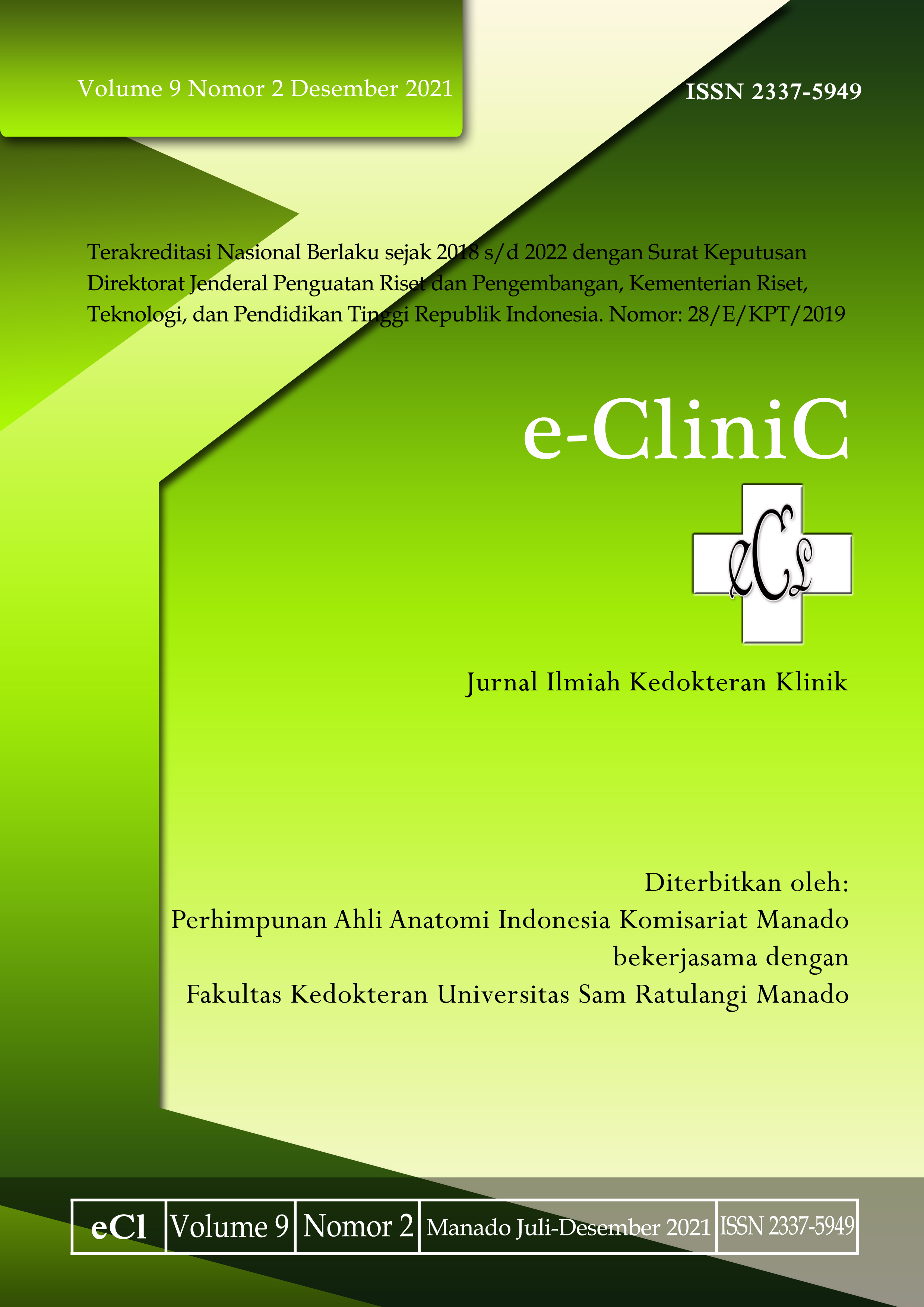Evaluasi Hasil Labioplasti Menggunakan Skor CLEFT-Q
DOI:
https://doi.org/10.35790/ecl.v9i2.35939Abstract
Abstract: Application of CLEFT-Q score instrument in the assessment of surgical outcomes for cleft lip and/or cleft palate based on patient reports is still relatively new. This study was aimed to establish the normative value of the Indonesian version of CLEFT-Q score in post-cleft lip surgery patients and to differentiate the results of cleft lip surgery according to the score based on the type of cleft, age, and sex. This was a preliminary study using the Indonesian CLEFT-Q instrument. Patients were interviewed for filling out the Indonesian version of CLEFT-Q after surgery. There were 75 samples in this study. Significant results were found in the association between age and CLEFT-Q score (p<0.05 and R>0.35). Variable selection for multi-variable analysis included cleft type and age in the model, where age alone indicated a significant relationship. The linear regression model involved the relationship between CLEFT-Q scores and gender, age, and cleft type as covariates. The correlation shown was classified as having moderate strength (R=0.46) for all covariates. In conclusion, the normative value of the Indonesian version of CLEFT-Q score with an approach to post-cleft lip surgery patients got a value that was in accordance with the highest standard in the literature, namely 91. The results of cleft lip surgery according to the Indonesian version of CLEFT-Q score based on the type of cleft, age and gender can be applied according to the literature.
Keywords: cleft lip; cleft palate; cleft lip and palate; Indonesian version of CLEFT-Q
Â
Abstrak: Penerapan skor CLEFT-Q dalam penilaian luaran operasi bibir sumbing dan/atau langit-langit terbelah berdasarkan laporan pasien masih relatif baru. Penelitian ini bertujuan untuk mene-gakkan nilai normatif skor CLEFT-Q berbahasa Indonesia pada pasien pasca operasi bibir sum-bing serta membedakan hasil operasi bibir sumbing menurut skor tersebut berdasarkan tipe cleft, usia, dan jenis kelamin. Jenis penelitian ialah studi pendahuluan penggunaan CLEFT-Q berbahasa Indonesia. Pasien diwawancarai untuk melakukan pengisian CLEFT-Q berbahasa Indonesia setelah operasi. Hasil penelitian mendapatkan total 75 sampel. Hasil bermakna ditemukan pada hubungan antara usia dan skor CLEFT-Q (p <0,05 dan R > 0,35). Seleksi variabel untuk analisis multivariabel mengikutsertakan tipe cleft dan usia di dalam model, dan variabel usia saja yang mengindikasikan adanya hubungan bermakna (95% CI 1,15-2,33; p=0,006). Model regresi linear melibatkan hubungan antara skor CLEFT-Q dengan jenis kelamin, usia, dan tipe cleft sebagai kovariat dan mendapatkan korelasi kekuatan sedang (R=0,46) untuk semua kovariat. Simpulan penelitian ini ialah nilai normatif skor CLEFT-Q berbahasa Indonesia dengan pendekatan terhadap pasien pasca operasi bibir sumbing mendapatkan nilai yang sesuai dengan standar tertinggi pada kepustakaan yaitu 91. Hasil operasi bibir sumbing menurut skor CLEFT-Q berbahasa Indonesia berdasarkan tipe cleft, umur dan jenis kelamin dapat diterapkan sesuai kepustakaan.
Kata kunci: cleft lip; cleft palate; cleft lip and palate; skor CLEFT-Q berbahasa IndonesiaDownloads
Published
How to Cite
Issue
Section
License
COPYRIGHT
Authors who publish with this journal agree to the following terms:
Authors hold their copyright and grant this journal the privilege of first publication, with the work simultaneously licensed under a Creative Commons Attribution License that permits others to impart the work with an acknowledgment of the work's origin and initial publication by this journal.
Authors can enter into separate or additional contractual arrangements for the non-exclusive distribution of the journal's published version of the work (for example, post it to an institutional repository or publish it in a book), with an acknowledgment of its underlying publication in this journal.
Authors are permitted and encouraged to post their work online (for example, in institutional repositories or on their website) as it can lead to productive exchanges, as well as earlier and greater citation of the published work (See The Effect of Open Access).







